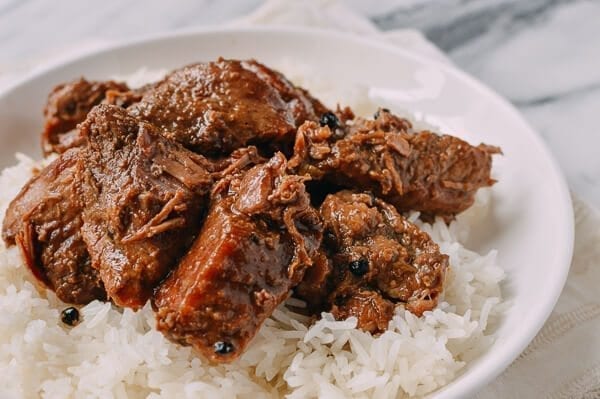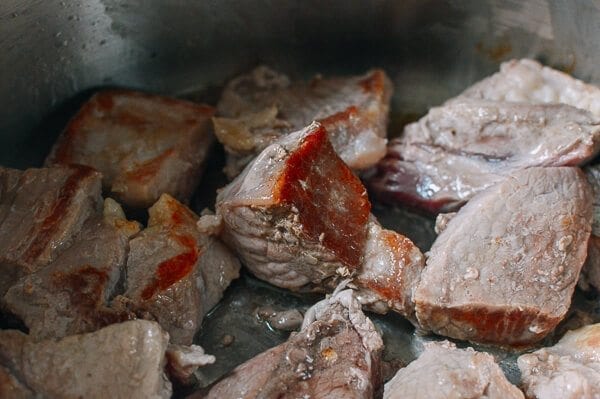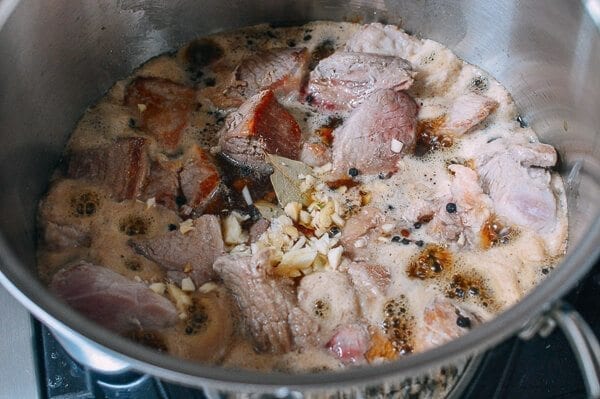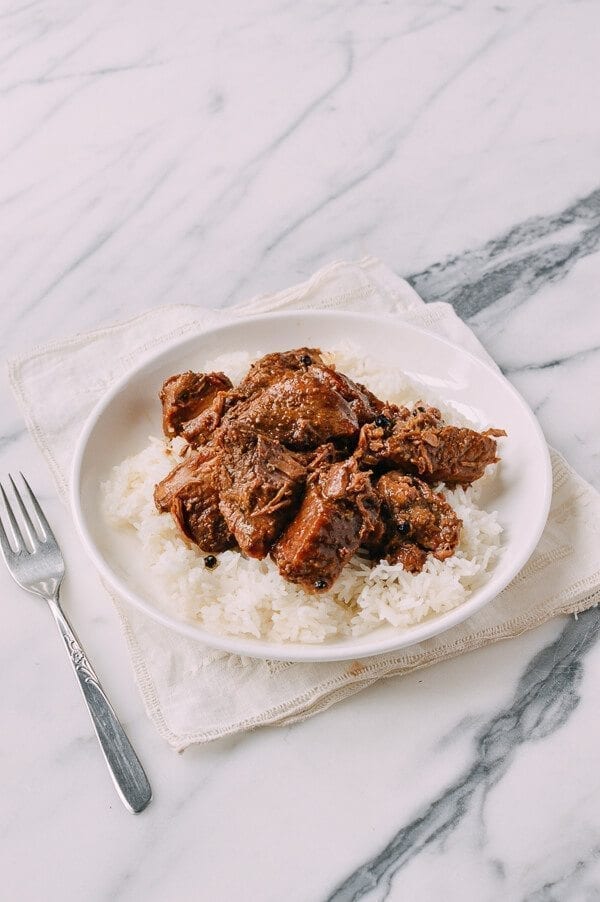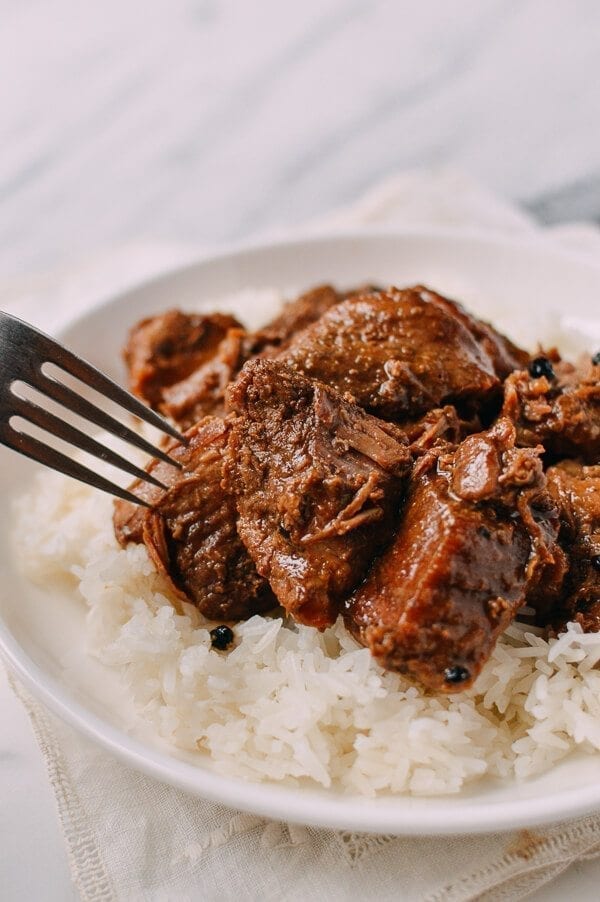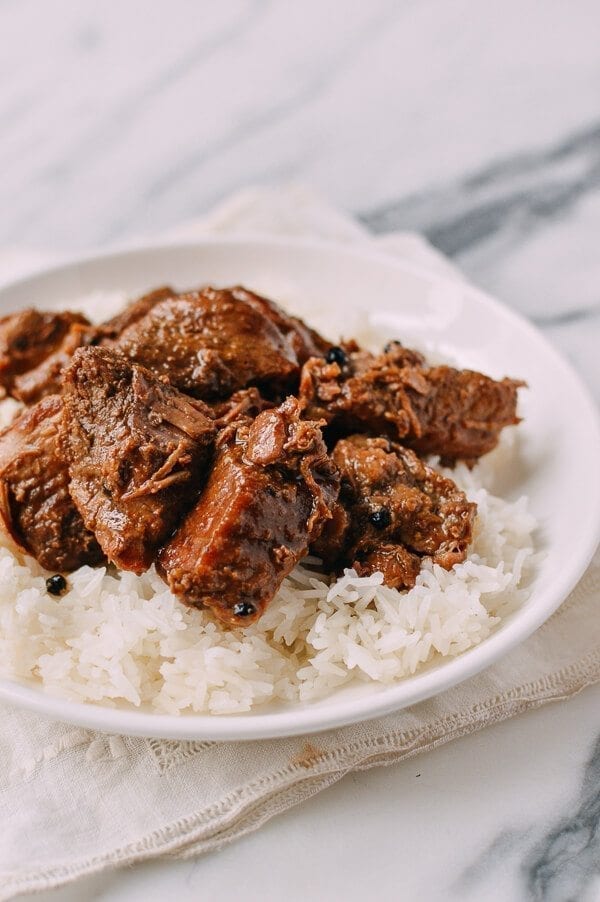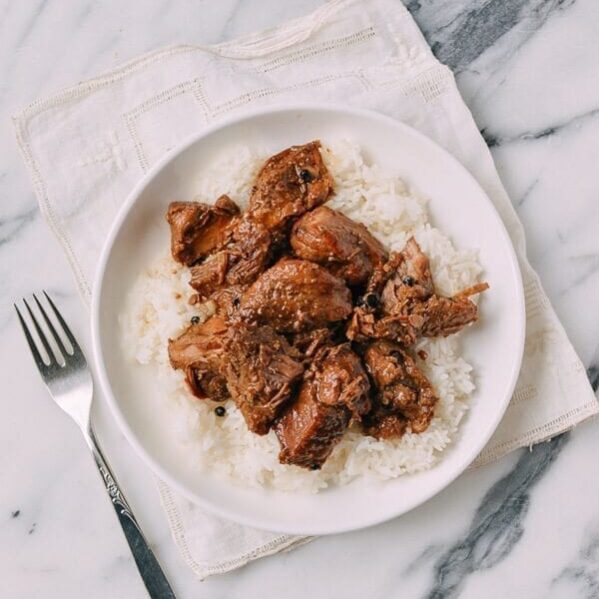Note: We originally published this recipe in December 2016. We’ve updated it here with additional detail and metric measurements. Enjoy!
What Is Filipino Adobo?
Adobo is really a kind of cooking method, originating in the Philippines. It involves simmering meat, vegetables, or even seafood in a mixture of vinegar, soy sauce, and garlic. The result is a tangy, savory stew that changes slightly with whatever protein or vegetable you decide to cook. While “adobo” is a Spanish word (the Spanish colonized the country in the late 1500s to the early 1600s), the cooking method is native to the Philippines. In this case, I decided to make pork adobo. Once again, we all agreed that this mixture of flavors is a definite winner. One taste, and you’ll love it too! This recipe is more of a classic adobo, in that it doesn’t have coconut milk like in our chicken version. (Coconut milk is a non-traditional adobo ingredient, or at least it’s a specific variation.) While I like how mellow the coconut milk makes the sauce, we’re using pork shoulder here, which has plenty of fat to balance out the acidity of the vinegar.
Quick Recipe Notes
This is a super short post, and a super short recipe, because this Pork Adobo recipe is insanely easy—no marinating or fiddly steps required. While it does take some time to simmer on the stove, it only takes a few minutes to throw together.
That said, here are a few recipe tips and notes:
If you don’t want the black peppercorns free-floating in your pork adobo, you can place them (along with the bay leaf) in a piece of cheesecloth tied with kitchen string. You can then easily remove this flavor packet (the fancy word for it is sachet) before serving. We do recommend sticking to whole peppercorns rather than cracked black pepper or black pepper powder—the flavor is different and more subtle! While we usually use regular soy sauce and rarely low-sodium soy sauce, we do recommend using it here. You need 1/3 cup soy sauce to create the braising liquid to simmer the pork in. To avoid the dish becoming too salty while still maintaining that rich soy sauce flavor, low-sodium soy sauce is a must. Let’s talk pork shoulder. Look for boneless pork shoulder or pork butt for this recipe. These actually two different cuts from the shoulder of the pig. What we call “pork shoulder” is the lower part of the shoulder, closer to the leg. It may also be labeled “picnic shoulder.” Confusingly “pork butt” is actually the upper part of the shoulder, just above that cut. You can find both cuts either bone-in or boneless. Buying a boneless cut is easier, but you can also buy it bone-in and simply cut around the bone (save it for a tasty stock, like my mom’s pork & chicken stock). If your pork shoulder cut comes with skin, we recommend leaving it on! The texture of the braised and cooked skin is the best (in our opinion, at least). Talso he skin will make the sauce richer and stickier. If you wanted to make this recipe even more decadent, you could try it with pork belly. (Try to find the leanest pork belly possible. It may sound like an oxymoron, but there are certainly strips of pork belly that are leaner than others.) This dish is often cooked with cane vinegar. Datu Puti is the most common brand, and we always have a bottle in the pantry. However, regular white distilled vinegar will work too!
Pork Adobo Recipe Instructions
In a medium dutch oven or pot over medium high heat, add the oil and sear the pork until browned on all sides. Stir in the vinegar, low sodium soy sauce, garlic, bay leaf, black peppercorns, sugar, and water, and bring to a boil. Reduce the heat to medium -ow, cover, and simmer for 1 hour. Remove the cover and continue simmering for another 30 minutes, until the sauce is reduced and the pork is very tender. Serve over steamed jasmine rice!
